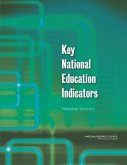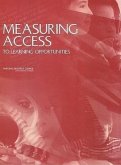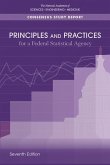The challenge of monitoring disparities in educational achievement and opportunities shares some characteristics with other complex regulatory problems. For example, when Congress adopted the Clean Air Act (1970) nearly 50 years ago, it emphasized the importance of public health but provided no clear line for distinguishing clean air from dirty air. Most fundamentally, regulating pollution has required choices about what indicates that air is "polluted" for regulatory purposes, how to measure and monitor those indicators, and when the measured level of an indicator should trigger enforcement or other intervention. The statute provided few answers, or even a definitive list of "pollutants" to be regulated. Nor were there definitive answers in the Constitution, economics, the biological sciences, or epidemiology. Instead, definitions and decisions have been a continuous enterprise involving interpretations of vague statutory language, promulgation of hundreds of federal and state regulations, enforcement experience, research in multiple disciplines, and the turbulence of politics.
Hinweis: Dieser Artikel kann nur an eine deutsche Lieferadresse ausgeliefert werden.
Hinweis: Dieser Artikel kann nur an eine deutsche Lieferadresse ausgeliefert werden.








